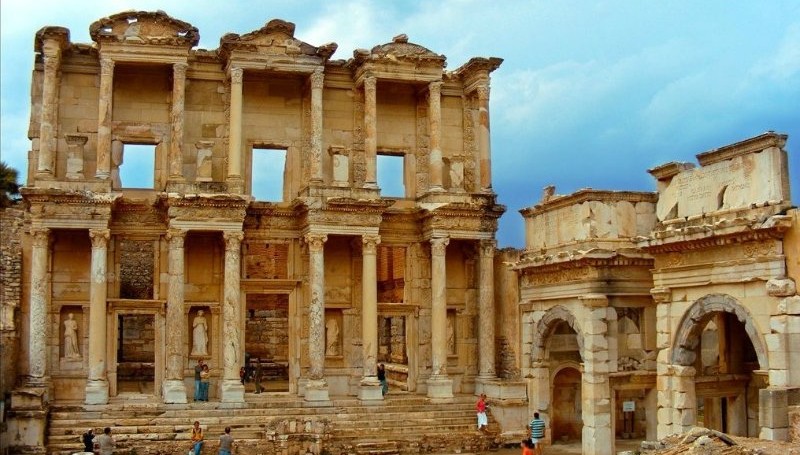Efes Tarihi
Latest research reveals that Ephesus and its surrounding countryside has been the site of a series of ancient settlements, the first of which was Apasa, capital of the Kingdom of Arzawa. This was founded some 6,000 years ago in the vicinity of the Temple of Artemis during the Hittite period by the Amazons, fierce female warriors from Anatolia, mentioned in Homer's Iliad and Odyssey. It is thought that 'Ephesus' is a derivation of the word 'Apasa'.
The next settlement, on the slopes of Ayasuluk Hill, was home to indigenous tribes the Carians and Lelegians. They worshipped the mother goddess Cybele, who attracted pilgrims from all corners of the globe.
In Greek and Roman civilisations no major decision could be made without first consulting an oracle. When Androclos was sent by his father, Kodros, the King of Athens, to found a new colony on the Aegean coast, he was told by an Oracle, "A fish and a boar will show you where to build your new city". Hungry after their long voyage, Androclos and his team caught a fish which they started to cook over an open fire. The fish jumped out of the pan, scattering flames into tinder-dry nearby bushes, which in turn frightened a boar which ran away. Androclos chased and killed the boar then fulfilled the prophecy by constructing the new city at the spot where it fell.
The location was on the estuary of the River Menderes, with a large, sheltered natural harbour. The city soon became a prosperous centre of trade; it was a place of great beauty and a centre of both religion and culture. After Cybele, first Artemis and later the Virgin Mary both drew pilgrims from around the world. Ephesus was home to Heraclitus, a famous philosopher who wrote about the human soul. "On death, the soul becomes water which soaks into the soil, but water gives life to the soil and life to the soul". He also claimed that, "No-one can enter the same river twice; although it may appear the same, its constituents have all changed".
Turbulent times followed, during which Ephesus was fought over, won and lost many times. In the middle of the 6th Century BC it was part of the Lydian Empire under King Croesus. The Persian Empire gained control in 546 BC and ruled until defeated by the army of Alexander the Great in 334 BC. After Alexander’s death, command of the city passed to two of his generals, Lysimachus and Seleucid. When the harbour began to silt up, Lysimachus moved the city a short distance from the north slope of Mount Pion to a location nearer Mount Coressos, now known as Mount Bulbul, where the remains of the city walls can still be seen today. In 190 BC Pergamon won control of Ephesus and ruled until 133 BC, when the city was captured by the Romans.
Ephesus reached its zenith under the Romans, its population exceeded ¼ million and it became the capital city of the province of Asia Minor. Most of the remains which have been excavated during the last 150 years date from this Roman period.
After the 6th Century AD continual silting made the harbour unusable, the city lost its trade and its importance and fell into decline. It was subjected to many raids by Arabs; the silting river spread to become a mosquito ridden swamp and the inhabitants gradually moved away to establish a new settlement back on Ayasuluk Hill. This settlement grew into a thriving market town which was renamed Selçuk in 1914 and today has a population of some 30,000.

